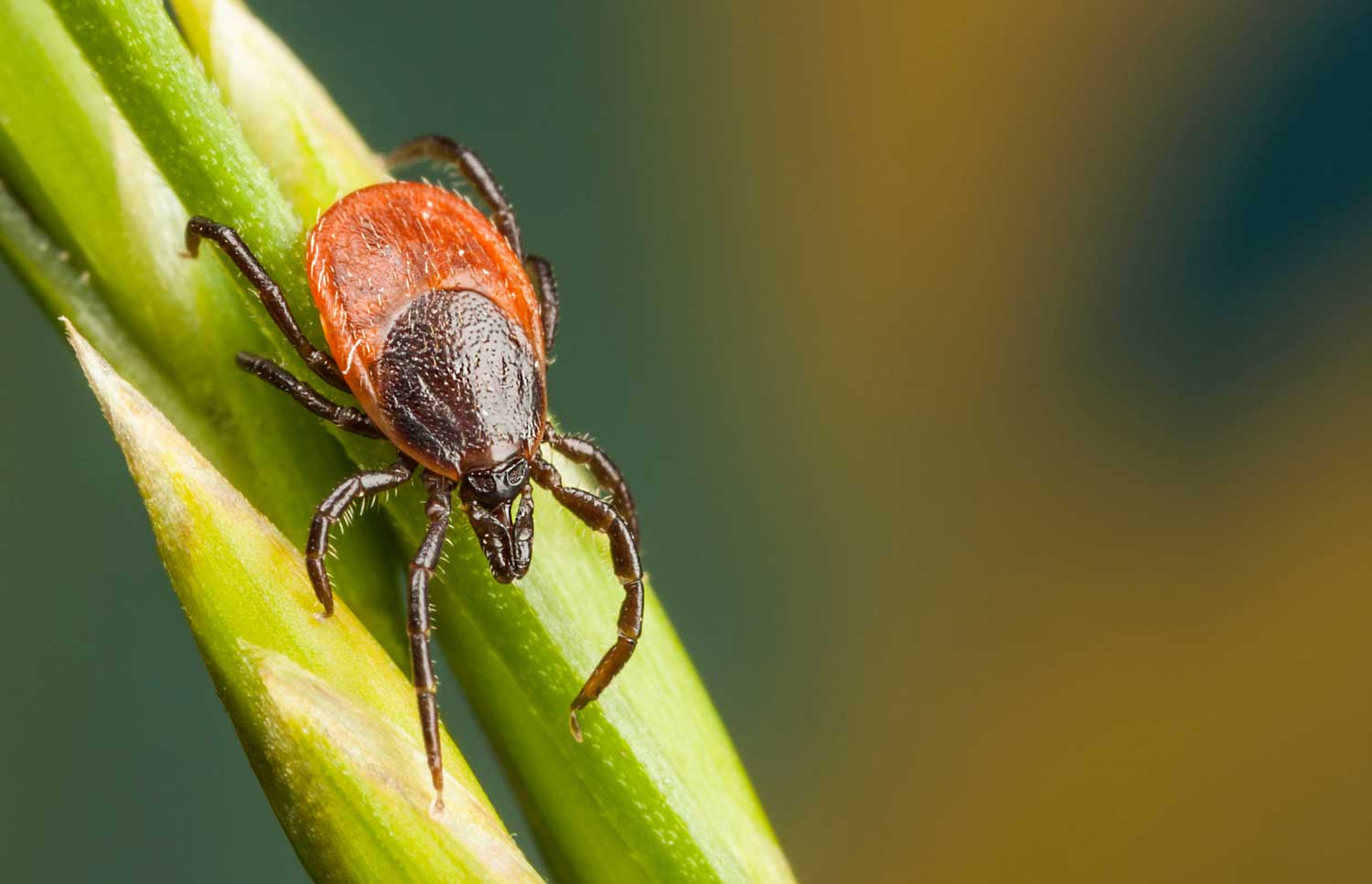Tick safety 101: How to protect yourself outdoors

Warmer weather means we tend to spend more time outdoors, but with that warmer temperatures also comes an increase in tick activity. While most ticks are harmless, it's important to know that ticks can transmit dangerous and even life-threatening diseases to humans and our pets. Knowing where you might encounter ticks and how to avoid them is key to staying safe while enjoying nature.
Ticks — which are arachnids, not insects — are efficient at transmitting diseases because they firmly attach onto their hosts to suck blood, often for several days, the Illinois Department of Public Health reports. Because they are so small, they often go unnoticed by people for many days.
Spring and summer are when people most often encounter ticks in Illinois, but it's important to know that ticks can be active at any time when ground temperatures are at least 45 degrees, IDPH advises. That means ticks can be active even in winter during mild weather.
We usually encounter ticks in grassy or shrubby areas. They will sit atop blades of grass or vegetation and quickly move onto a person or animal as they walk by, brushing against the plants. Ticks can't jump or fly; they simply crawl onto their host, according to the health department.
Fifteen tick species can be found in Illinois, but most are not regularly encountered by humans, according to the health department. Ticks are divided into two groups: hard ticks and soft ticks. Hard ticks have a shield behind their mouthpart, while soft ticks do not. It's the hard ticks that pose the most risk to humans. Soft ticks typically feed on birds and bats.
The tick species most often encountered by humans in Illinois are the American dog tick, blacklegged tick (also called the deer tick), brown dog tick, lone star tick and winter tick, IDPH reports.
About a half-million new cases of tick-borne illness are reported in people in the United States each year, according to the National Institutes of Health. Lyme disease is the most common tick-borne illness, accounting for more than 80% of all tick-related illnesses. Other tick-borne diseases include Rocky Mountain spotted fever, tularemia, anaplasmosis, ehrlichiosis and babesiosis.
Some tick-borne illnesses can be life threatening. Symptoms of tick-borne illness vary, but if you become sick with a fever and/or rash after being in an area prone to ticks, the health department advises that you immediately contact your health care provider. If you find a blacklegged tick on you that may have been attached for three or more days, seek medical attention to determine if antibiotics should be prescribed to prevent Lyme disease.
You can help prevent tick-borne diseases by limiting your encounters with ticks from outdoors by taking the following precautions outlined by the Illinois Department of Public Health:
- Avoid spots with high grass, leaf litter or woody, brushy areas.
- Walk in the center of trails to avoid brushing up against vegetation.
- Tuck long pants into your socks and boots. You can also tape your pants around your ankles.
- Wear light-colored clothing so it is easier to see ticks.
- Use insect repellents containing 20% DEET, picaridin, IR3535 or oil of lemon eucalyptus.
- Conduct full-body checks for ticks every two to three hours while outside, and make sure to check children and pets as well. Pay close attention to the hair, scalp, ears, underarms, belly button, waist, behind the knees and between the legs.
Once indoors, make sure to check yourself over thoroughly, and check your kids and pets. You should also shower within two hours of coming indoors and put your clothes in the dryer on high for 10 minutes to kill any ticks, the health department advises.
If you find a tick on you or your child or pet, remove it immediately and dispose of it by flushing it down the toilet, sticking it to tape or putting it in a container with alcohol or soapy water, IDPH advises.
If a tick has bitten you and is embedded, the most effective way to remove it is with tweezers. Grab the tick firmly in the tweezers as close to the skin as possible and pull it straight out gently but firmly without twisting the tick, the health department advises. If you don't have tweezers, avoid touching the tick directly while removing it and instead use cloth or tissue. Do not use nail polish, petroleum jelly or burnt matches to remove a tick.
If you have outdoor pets, the Centers for Disease Control and Prevention recommends checking them for ticks daily, making sure to check in and around the ears and eyelids, under the collar, under and between the legs, between the toes and around the tail. For dogs, you should also use a tick-preventive product.
